This set of Linear Integrated Circuit Multiple Choice Questions & Answers (MCQs) focuses on “Comparator”.
1. Depending on the value of input and reference voltage a comparator can be named as
a) Voltage follower
b) Digital to analog converter
c) Schmitt trigger
d) Voltage level detector
View Answer
Explanation: A comparator is some time called as voltage level detector because, for a desired value of reference voltage, the voltage level of the input can be detected.
2. Why clamp diodes are used in comparator?
a) To reduce output offset voltage
b) To increase gain of op-amp
c) To reduce input offset current
d) To protect op-amp from damage
View Answer
Explanation: The diodes protect the op-amp from damage due to excessive input voltage. Because of these diodes the difference input voltage of the op-amp is clamped to 0.7v or -0.7 v, hence these diodes are clamp diodes.
3. Find the non-inverting comparator
a)
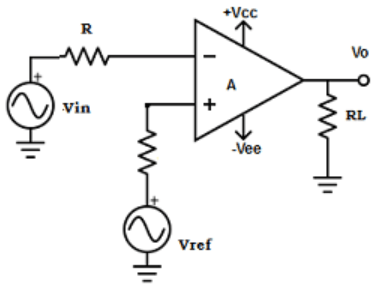
b)
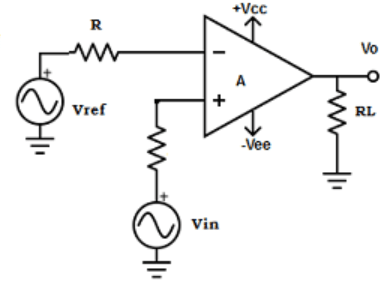
c)
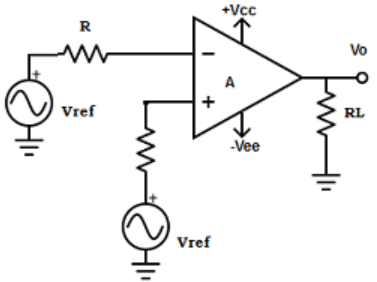
d)
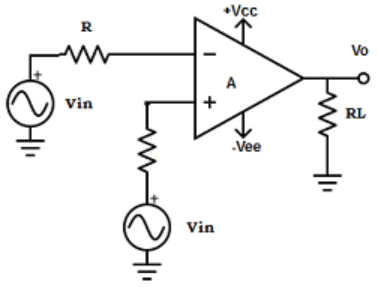
View Answer
Explanation: In a non-inverting comparator a fixed reference voltage Vref of 1v is applied to positive inverting input terminal and the other time vary in signal voltage is applied to non-inverting input terminal of the op-amp.
4. How the op-amp comparator should be choosen to get higher speed of operation?
a) Large gain
b) High slew rate
c) Wider bandwidth
d) None of the mentioned
View Answer
Explanation: The bandwidth of the op-amp comparator must be wider so that the output of comparator can switch rapidly between saturation levels. Also, the op-amp responds instantly to any change in condition at the input.
5. How to obtain high rate of accuracy in comparator?
a) Input offset
b) High voltage gain
c) High CMRR
d) All of the mentioned
View Answer
Explanation: High voltage gain causes comparator output voltage to switch between saturation levels. High CMRR rejects noise at input terminal and input offset (voltage & current) help to keep changes in temperature variation very slight.
6. How to keep the output voltage swing of the op-amp comparator within specific limits?
a) External resistors or diodes are used
b) External zeners or diodes are used
c) External capacitors or diodes are used
d) External inductors or diodes are used
View Answer
Explanation: To keep the output voltage swing within specific limit, op-amps are used with external wired components such as zeners or diodes. In the resulting circuit, the outputs are limited to predetermined values.
7. Zero crossing detectors is also called as
a) Square to sine wave generator
b) Sine to square wave generator
c) Sine to triangular wave generator
d) All of the mentioned
View Answer
Explanation: In zero crossing detectors, the output waveform is always a square wave for the applied sinusoidal input signal.
8. What is the drawback in zero crossing detectors?
a) Low frequency signal and noise at output terminal
b) High frequency signal and noise at input terminal
c) Low frequency signal and noise at input terminal
d) High frequency signal and noise at output terminal
View Answer
Explanation: Due to low frequency signal, the output voltage may not switch quickly from one saturation voltage to other. The presence of noise can fluctuate the output between two saturation voltages.
9. State a method to overcome the drawback of zero crossing detectors?
a) Increasing input voltage
b) Use of positive feedback
c) Connect a compensating network
d) None of the mentioned
View Answer
Explanation: The drawback of zero crossing detectors can be in cured with the use of regenerative or positive feedback that causes the output to change faster and eliminate any false output transition due to noise signals at the input.
10. Name the comparator that helps to find unknown input.
a) Time marker generator
b) Zero crossing detectors
c) Phase meter
d) Window detector
View Answer
Explanation: Sometimes it is necessary to find the instant at which an unknown input is between two threshold levels. This can be achieved by a circuit called window detector.
11. Find the instance at which the input can be fed to the op-amp in a three level comparator with LED indicator.

a) When Green LED glow
b) When Yellow LED glow
c) When Red LED glow
d) All of the mentioned
View Answer
Explanation: The input can be fed to the op-amp when the green LED glows, which is considered to be safe input that is when the input voltage is between 3v and 6v.
12. Find the output voltage at the point V2 from the given circuit.
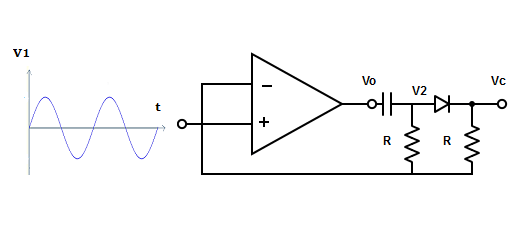
a)
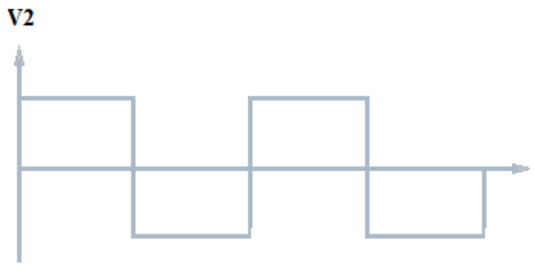
b)
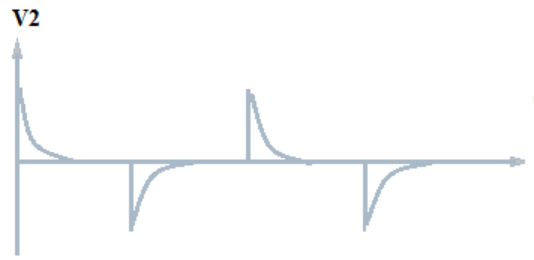
c)
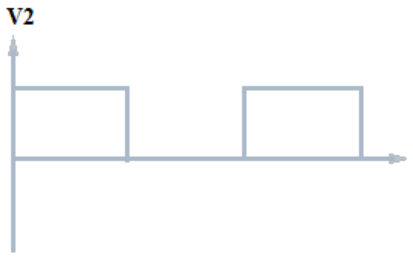
d)
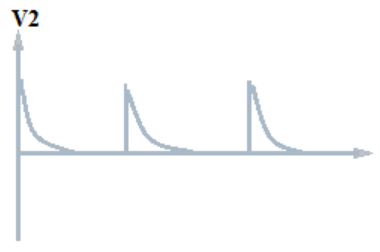
View Answer
Explanation: The output of the zero crossing detector is differentiated by an RC circuit (RC>>1). So, the voltage at V2 is a series of positive and negative pulses.
13. Mention the application areas of time marker generator can be used
a) Monoshots
b) SCR
c) Sweep voltage of CRT
d) All of the mentioned
View Answer
Explanation: A diode connected at the output of time marker generator circuit converts the sinusoidal signal into a train of positive pulses. So, these pulses are used in triggering the monoshot, SCR, sweep voltage of CRT, etc.
14. Which among the following is used to increase phase angle between different voltages?
a) Phase detector
b) Window detector
c) Zero crossing detector
d) None of the mentioned
View Answer
Explanation: Phase angle between different voltages can be measured using phase detector circuit. The corresponding voltage to be measured is converted into spikes and the time interval between the pulse spikes is measured, which is proportional to the phase difference.
15. For the comparator shown below, determine the transfer curves if an ideal op-amp with VZ1= VZ2=9v.

a)
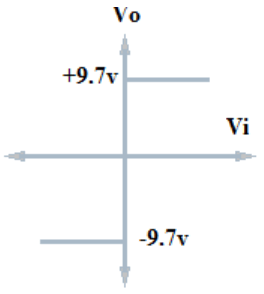
b)
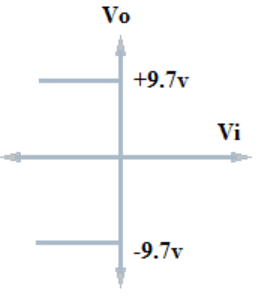
c)
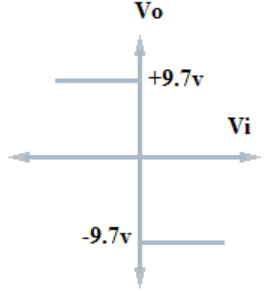
d)
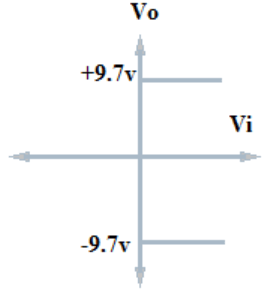
View Answer
Explanation: The open loop voltage gain of an ideal op-amp AOl=∞, even a small positive or negative voltage at the input drives the output to ±Vsat. So, the output voltage VO = ±( V2 +Vsat)
Therefore, VO = ±(VZ+VSat) =± (9+0.7) = ±9.7 v.
Sanfoundry Global Education & Learning Series – Linear Integrated Circuits.
To practice all areas of Linear Integrated Circuits, here is complete set of 1000+ Multiple Choice Questions and Answers.
If you find a mistake in question / option / answer, kindly take a screenshot and email to [email protected]
